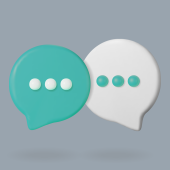Mihaly Csikszentmihalyi coined the phrase “flow,” describing it in his book Flow as:
A state in which people are so involved in an activity that nothing else seems to matter; the experience is so enjoyable that people will continue to do it even at great cost, for the sheer sake of doing it.
What are the characteristics of flow?
The characteristics of flow include clearly defined goals every step of the way, receiving immediate feedback, feeling in control, and loosing track of time. The recent Pixar movie Soul describes flow as when you are “really into something and it feels like you’re in another place.” Importantly, the task must be just outside our grasp, but we believe we can reach it (there is a balance between challenge and skills).
Most lawyers would become frustrated if their day was filled with NDAs or work that would be better automated. But they could also become overwhelmed if their first in-house role (without external support!) is a complex restructure or construction project and their only expertise is in intellectual property.
This fine line is described by flow expert Tanya Caldwell as the “emotional midpoint between boredom and anxiety, in what scientists call the flow channel — the spot where the task is hard enough to make us stretch but not hard enough to make us snap.” According to Steven Kotler, the general thinking is that, “if you want to trigger flow, the challenge should be four percent greater than the skills.”
What happens to our brains during flow?
During flow, the brain simultaneously releases five powerful neurochemicals that affect performance:
- Norepinephrine (helps tighten focus and shut out distractions);
- Dopamine (increases attention, information flow, pattern recognition, and is a skill booster);
- Endorphins (help block out pain and work hard without burning out);
- Anandamide (promotes lateral connections); and
- Serotonin (the feel-good chemical Kotler claims “bonds teams together more powerfully than the best intentioned offsite”).
When in flow, the prefrontal cortex, often described as the CEO of the brain (in charge of problem solving, planning, self-regulation, impulse control, attention, and empathy) temporarily deactivates in a process called transient hypo-frontality (a term made popular by Arne Dietrich).
This temporary deactivation of the prefrontal cortex may trigger feelings of distortion of time, loss of self-consciousness, and loss of the inner critic (deactivating the dorsolateral prefrontal cortex). Without our inner critic, “creativity becomes more free-flowing, risk taking becomes less frightening.”
Without our inner critic, "creativity becomes more free-flowing, risk taking becomes less frightening."
In a 10-year study conducted by McKinsey, top executives reported being five times more productive in flow. Flow also impacts how we learn new skill. DARPA, for example, found that military snipers trained in a state of flow learned 230 percent faster than normal.
Kotler describes four stages in the flow process:
- Struggle where we are taking in information and often feel stressed, anxious, and overwhelmed.
- Release when we accept the challenge and take a focused break aimed to activate the parasympathetic nervous system, relax the brain, and allow our subconscious mind to consider the first stage of flow.
- Flow where our brain connects the dots, solves, and problems and the neurochemicals above are released.
- Recovery where our brain rewires and stores the experience of flow. We need the right kind of rest and active recovery techniques including meditation, exercise, sleep, or Epsom salt baths.
How do we achieve flow?
We can all achieve a state of flow at work or in our lives. Here are some suggestions.
- Discover your flow profile with the Flow Genome Project Quiz. I am a “Flow Goer,” and this profile gets into flow through “yoga, meditation, ecstatic dancing, eco-tourism, and personal growth retreats.” I often meditate or do yoga before completing a task where I need to maximize my productivity either because of limited time or limited energy.
- Minimize distractions at work. Caldwell stresses that “Flow follows focus. When you want time to focus, agree on clear signals with your team about when they should not be interrupted, such as a sign on your desk or door or wearing headphones. While flow drives peak performance and creativity, it boosts and protects psychological well-being too because many of the triggers and foundations for flow are practices grounded in positive psychology.”
Sonja Lyubomirsky in The How of Happiness, suggests these methods to increase flow experiences:
- Focus your attention because “my experience is what I agree to attend to.” What you notice and what you pay attention to is your experience — it is your life. When you are intensely concentrating on doing something (e.g., drafting a contract) you are not thinking about what is for dinner.
- Be open to new and different experiences (e.g., hiking to a remote location or learning to play squash) and continuously learning new skills.
- Find the precise times and activities that put you into flow and multiply them.
- Transform routine and tedious tasks (e.g., waiting for the doctor or the bus) into something more meaningful and stimulating. Create “microflow” activities with specific goals and rules like creating a drawing with only symmetrical lines.
- Find flow in conversation. When talking with a colleague in person or over the phone, focus your attention on what they are saying and don’t respond too quickly. This may be difficult for those of us who talk a bit more than we listen — and it may inhibit flow at first — but it gets easier over time.
- Try to enter flow during your leisure time. Choose activities when you are concentrating and exercising your skills and limit activities like watching television.
Csikszentmihalyi has other suggestions:
- Listen to music, which can ward off boredom and anxiety, and when seriously listened to, can induce flow experiences (think back to losing track of time at a live concert!).
- Transform simple physical acts (like walking) to produce flow by setting an overall goal (your route), finding ways to measure your progress (easily measured with different metrics on your fitness wearables), concentrating on the task, and raising the stakes if the activity becomes boring (set a longer time or distance, a hillier route, etc.).
Achieving flow can help us to learn faster and be more productive. It can help us to live in the present moment and enjoy our day-to-day lives, making life enjoyable and worth living.
“The best moments in our lives are not the passive, receptive, relaxing times … The best moments usually occur if a person’s body or mind is stretched to its limits in a voluntary effort to accomplish something difficult and worthwhile.”
- Mihaly Csikszentmihalyi




